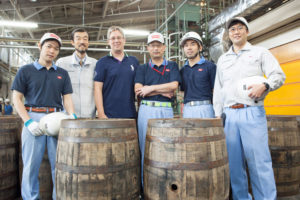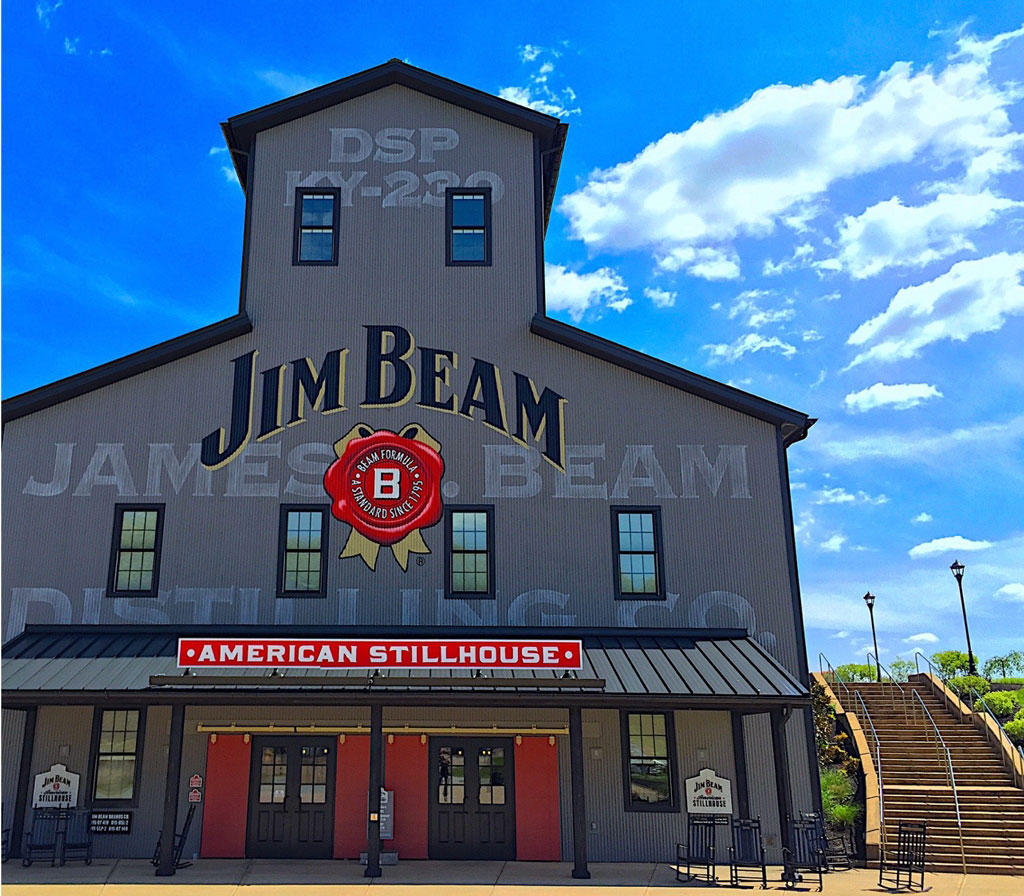Q&A With Stefan Van Eycken, Whisky Author
By Kurt Maitland

(Credit: Stefan van Eycken)
Japanese whisky has been one of the hottest whisky categories around in recent years, with the awards and press to prove it. As a result, Japanese whiskies have become increasingly scarce and expensive, both at home and abroad. The recent news of shortages and the removal of several core releases from established line-ups has prompted many questions from whisky fans. There is no one better to discuss this with than Stefan Van Eycken, the author of one of the best books on Japanese Whisky, Whisky Rising, and editor of the Japanese whisky site, Nonjatta.
KM: First off, can you tell us about yourself and how you got into Japanese whisky?
SVE: I’ve been into whisky for around 25 years now, since my late teens. When I moved from Scotland to Japan in 2000, I thought I was moving away from all the action, not being aware that whisky was also produced in Japan. In 2000, very few people, and that includes people in Japan, were enthusiastic about Japanese whisky, so it wasn’t like today where every man and his dog wanted to jump on the bandwagon.
On my travels through Japan, I came across distilleries and most of them looked like ghost towns, either mothballed or active for a day or so a week, but I quickly discovered that the quality was top notch. For me, those were the Golden Years. So much top quality Japanese whisky to be had and nobody was interested. Now, the pendulum has swung, so as an old-timer—and I know this makes me sound like an old fart—I miss those days. The “mad scramble for crumbs” situation that we are in nowadays doesn’t appeal to me at all.
KM: What surprised you most about Japanese whisky as you learned more about it?
SVE: The fact that it was cheap and good quality yet nobody cared about it. That’s what surprised me for the better part of the first decade of the 21st century. What surprises me now is that people are willing to pay insane amounts for the stuff, just because it’s “Japanese whisky”.
KM: If you were to compare the Japanese whisky industry to its Western brethren, what do you feel are the main differences?
SVE: The biggest difference is that there is no swapping of stock, so variety has to be created in-house and producers need to be self-sufficient.
KM: In your experience, how did the Japanese whisky industry see themselves before and after they began to win awards and acclaim from the West?
SVE: I don’t think the industry sees itself any differently; the biggest change in perception was on the consumer side.
KM: In my own experience, I’ve found Japanese whisky bars to be amazing – almost more of a temple than a drinking establishment. Am I crazy, is this common, or did I just go to the wrong bars?
SVE: I agree with you on this point. I think the reason why this sort of style—small, a dozen or so seats, with the owner/bartender behind the stick and quite cheap in general compared with whisky bars in other parts of the world—is viable is because the overhead costs are so low and because the bars are, by necessity, small. Rent is quite cheap and often the only person behind the counter will be the owner, so as long as the owner can make a decent living off his bar, it’s all good.
KM: How would you describe the rivalry/competitive nature of the Nikka/Suntory relationship?
SVE: There are historical reasons for that rivalry, of course, but it is for the most part a “conceptual rivalry,” because Suntory is much bigger—purely in terms of quantity of whisky produced—than Nikka. In the past, I have been at events with both Suntory and Nikka folks in attendance where it was rather frosty, but more recently, there seems to be a more friendly relationship between the different producers, not just Suntory and Nikka, but also Kirin and the so-called craft producers. Whether this is more than just a surface thing is hard to gauge, of course.
KM: Do you think there will be a time where brands like Fuju Gotemba, Mars and Chichibu will be more competitive with Suntory and Nikka on the global stage?
SVE: I think the brands you mention are happy to occupy a niche on the global stage. They are not seeking to compete in terms of quantity. That scale, or lack thereof, is not an obstacle on the qualitative front is illustrated by Ichuro Akuto of Chichibu distillery winning best single cask malt whisky in the world at the 2017 World Whiskies Awards, the most “serious” whisky competition, with everything judged blind by experts and best blended whisky, limited edition at this year’s World Whiskies Awards. His example is inspiring other small-scale producers to up their game and shoot for the stars, so his importance cannot be overestimated.
KM: With the recent announcements from Suntory about Hibiki and Hakusku and Nikka’s decision to go with a NAS lineup, do you think there will be a time where these brands have enough aged stock to reset the clock to the levels they were when they decided to make the big push into the West?
SVE: There’s no doubt about that. The big boys have been producing at full capacity around the clock for years and years, but you cannot just address a shortage for Hibiki 17 and Hakushu 12 in ten years’ time. It’ll take a little longer, but the stock will be there in the future.
The question is: will the quality be there, and will the interest be there or will the market have moved on by then? Also, when something is there and readily available, people don’t worry too much about it. I call this the “dying aunt” syndrome: you know, when the aunt is alive and well, we feel “we can always visit” and therefore don’t. It’s only when there is a sense of urgency that people make a conscious effort to visit. I have seen so many people around me the past few weeks—since Suntory made the announcement—who, when it was available didn’t give a hoot about Hibiki 17 or Hakushu 12, but now suddenly are lamenting the discontinuation and are hunting and shelling out big money for those bottles.
KM: You have recently released a book “Whisky Rising” that I’ve had the pleasure of reading prior to my own trip to Japan. Your book and the knowledge it gave me helped to impress a lot of people on my trip so I must thank you. What was the hardest part of writing the book for you and how long did it take?
SVE: Thanks for your kind words. The actual writing took about half a year, but it is of course a distillation of almost two decades spent “in the field” talking to producers, bartenders and fellow enthusiasts. The hardest part was sidestepping the tendency for the big producers to want to exercise “editorial control” and I have to pick my words carefully here. The thing that’s hard now is the fact that I still haven’t earned a single yen from all the work. All expenses were paid out of my own pocket, from travel expenses to having to pay photographers, etc. The English edition is selling very well, and I want to send out a heartfelt thanks to everyone who’s bought the book! There’s a Chinese edition out (and even a pirated softback edition of that in China! And a Japanese fully-updated version on the way, and I am still in the red. I get quite a bit of flak from wife about that, as you can imagine: months and months of hard work and nothing in the bank to show for it. I guess I’m just a bad businessman. Good thing I have a full-time job in a totally different field.
KM: Finally, with more Japanese distillers entering the market and the big players having increased production, what do you see as Japanese whisky’s future, let’s say 10 years down the road?
SVE: I like your question because, yes, it’ll be in a year or 10 that we will start to see the first real fruits of everything that’s stirring now, and all those new distilleries popping up left and right. It’s only then that we will be able to separate the great from the good and from the merely average. It’s so ironic that people couldn’t be bothered to be supportive when we had distilleries like Karuizawa with bottlings in their distillery shop from every vintage of production available for purchase any day of the week, but now, every man and his dog is going crazy when a new distillery releases some new make, or some 5-month aged spirit.
Being supportive is great but there is such a thing as maybe being a little too supportive; that’d be the equivalent of me giving my son 50 bucks every other day because he had a good day at school. I was speaking to a bartender in Nagano recently—someone who has been following whisky very closely, in Scotland as well as Japan—and he echoed my sentiments. He said, “I don’t need the new make, and I don’t the 5-month old spirit. It’s fine to try those things in an educational setting—say, a seminar or some such—but as products, priced the way they are and snapped up blindly by consumers, that’s not the way I would want to go about it. I’ll check it out in ten years, and then I’ll form an opinion.”
I have enormous respect for the folks at Daftmill distillery in Scotland, who just launched their first product… 13 years after they started distilling. Now, that is an example of waiting for the whisky to really be ready, and not just paying lip service to that dictum.
I know that not every whisky business can be run like that, and that they need cash flow, but that’s their problem. I’m a consumer, and I don’t feel like I need to be concerned with that, unless I’m a shareholder in that distillery. If a new Scottish distillery were to try and sell me some young whisky for 60 dollars a bottle, I would tell them to stuff it where the sun doesn’t shine. I don’t see why my reaction would be any different, just because it was made in Japan.




